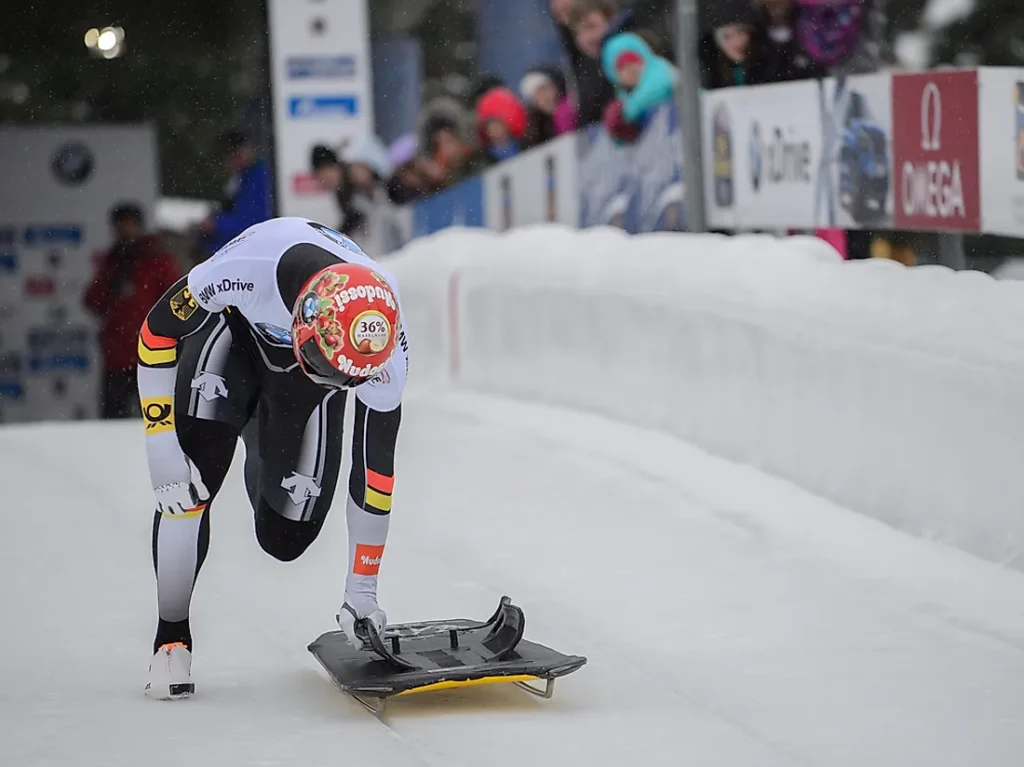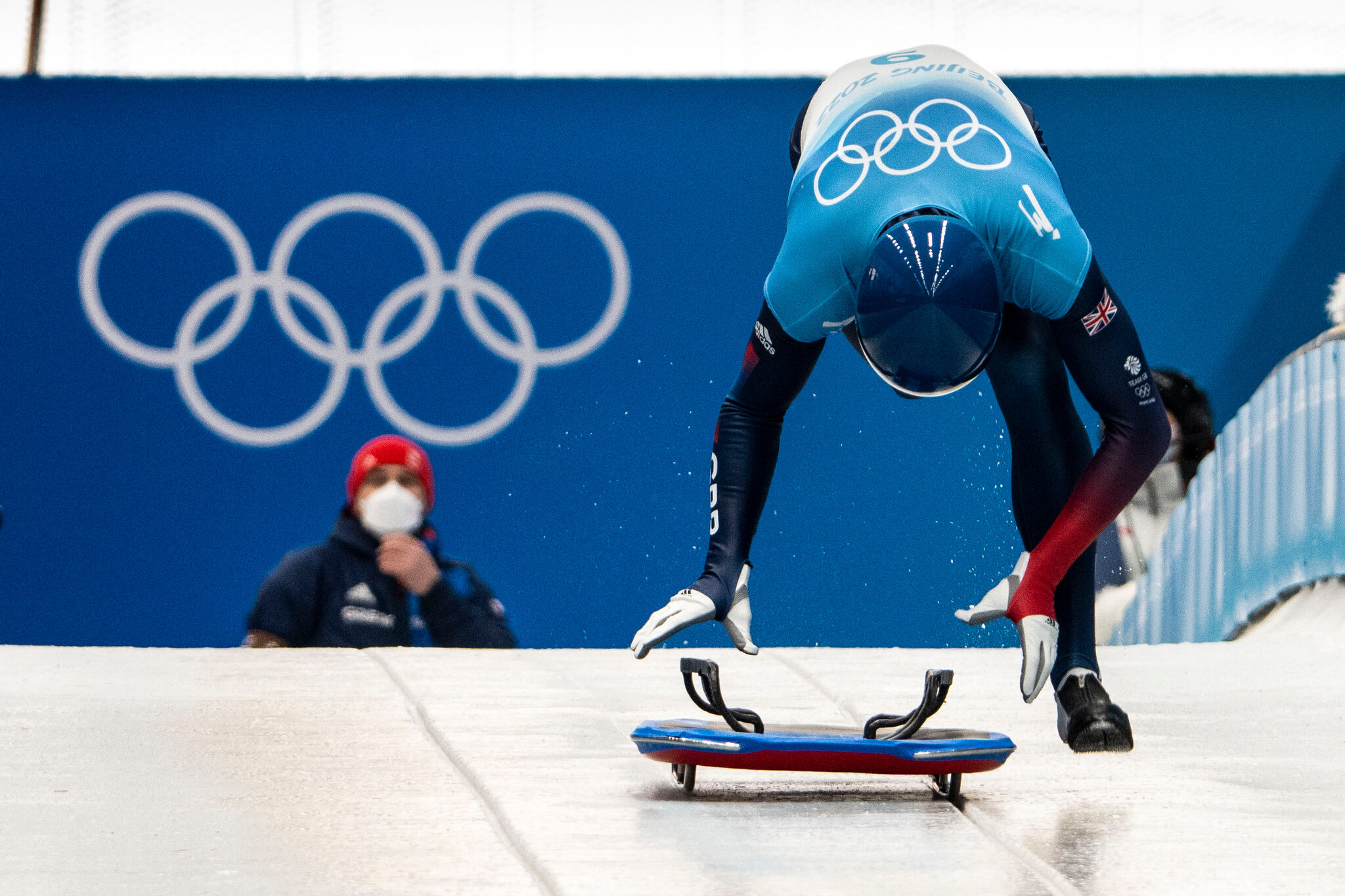The Skeleton Olympic sport is one of the most exhilarating events in the Winter Olympics, where athletes race headfirst down an icy track at breathtaking speeds. Known for its high-adrenaline nature and razor-thin margins of victory, skeleton combines speed, skill, and bravery, making it a must-watch event. In this guide, we will explore the history, rules, techniques, and the sheer thrill of this extreme sport.
History of Skeleton in the Olympics

Skeleton has a rich history that dates back to the late 19th century. It was first introduced in Switzerland, where daredevil athletes raced down icy tracks on small sleds. The sport made its Olympic debut at the 1928 Winter Games in St. Moritz, but was then removed from the program until its return in 1948. After another long absence, skeleton was officially reintroduced in the 2002 Winter Olympics in Salt Lake City and has been a staple of the Games ever since.
Over the years, skeleton has evolved with improved sled technology, better safety measures, and an increase in global participation. Today, the sport continues to grow, attracting athletes from around the world who seek the ultimate test of speed and skill.
How the Skeleton Olympic Sport Works
Skeleton is often compared to luge and bobsled, but it has distinct differences that make it unique.
The competition takes place on an icy bobsled track, which is typically between 1,200–1,500 meters long. Athletes start by sprinting for about 50 meters, pushing their sled before diving onto it in a prone position. Unlike other sledding sports, skeleton athletes steer by shifting their weight and using their shoulders and knees. Speeds can exceed 80 mph (130 km/h), making precision and body control essential for success.
Each race is timed down to the hundredth of a second, and the competitor with the fastest total time across multiple runs wins.
Skeleton Olympic Sport Rules
Competition Format
The Olympic skeleton event consists of four timed runs over two days. The athlete with the lowest combined time across all four runs wins the gold medal.
Timing and Scoring
Skeleton races are extremely precise, with results measured to the hundredth of a second. A single mistake—whether at the start or on a turn—can be the difference between winning and losing.
Equipment Regulations
The sled weight is strictly regulated:
- Men’s sleds: Maximum 43 kg (94.8 lbs)
- Women’s sleds: Maximum 35 kg (77.2 lbs)
Athletes must wear helmets with chin guards, aerodynamic speed suits, and spiked shoes to gain traction during the sprint start. The sled’s runners (metal strips that touch the ice) must meet specific temperature regulations to ensure fair play.
Track and Safety Rules
The icy track temperature and conditions are monitored to maintain a fair race. Competitors must stay in their sled throughout the run and cannot use their hands or feet to push off after launching onto the sled.
Training and Skills Required for Skeleton
Becoming a competitive skeleton athlete requires a combination of speed, strength, and mental focus. Since the sprint start is crucial, many skeleton racers have backgrounds in track and field. Core strength is essential to maintain balance and control at high speeds, while sharp reflexes help athletes navigate the twists and turns of the track.
Training involves sprinting drills, weightlifting, and on-track practice to perfect steering techniques. Athletes must memorize every curve of the track and anticipate how their sled will react at high speeds.
Dangers and Safety Measures in Skeleton
Skeleton is considered one of the most dangerous Olympic sports due to the high speeds and headfirst position. Athletes face risks including crashes, concussions, and broken bones. Unlike bobsled, skeleton racers have no protective enclosure, making crashes potentially severe.
Safety Measures
- Protective Gear: Helmets, padded suits, and sled reinforcements help reduce injury risks.
- Track Design: Safety barriers and track angles minimize crash impact.
- Strict Training Protocols: Athletes gradually progress to higher speeds and tougher tracks.
Even with these precautions, skeleton remains a sport where courage and skill are key to success.
Famous Skeleton Athletes and Records
Over the years, several skeleton athletes have achieved legendary status. Martins Dukurs (Latvia) dominated men’s skeleton for over a decade, winning multiple World Championships and Olympic medals. Lizzy Yarnold (Great Britain) made history by winning back-to-back Olympic gold medals in 2014 and 2018. Jon Montgomery (Canada) became famous for his 2010 Vancouver Olympic gold and iconic beer celebration.
The fastest recorded skeleton speeds have reached over 85 mph (137 km/h), making it one of the fastest sliding sports.
How to Get Involved in Skeleton
For those interested in trying skeleton, there are several pathways to get started. Many countries have skeleton development programs for beginners. Training centers in places like Lake Placid (USA), Whistler (Canada), and Sigulda (Latvia) offer programs for aspiring athletes.
Many competitors transition into skeleton from other sports, particularly track and field, gymnastics, and bobsled, due to the speed and agility required. Training includes sprinting, weightlifting, and balance drills to develop the necessary physical skills.
Conclusion
The Skeleton Olympic sport is a breathtaking test of speed, control, and fearlessness. Its history, rules, and competitive nature make it one of the most exciting events in the Winter Olympics. Whether you’re an enthusiastic spectator or an aspiring athlete, skeleton offers an adrenaline rush like no other.
To learn more about winter sports, training tips, and Olympic events, visit Easy Sports Guide for expert insights.

